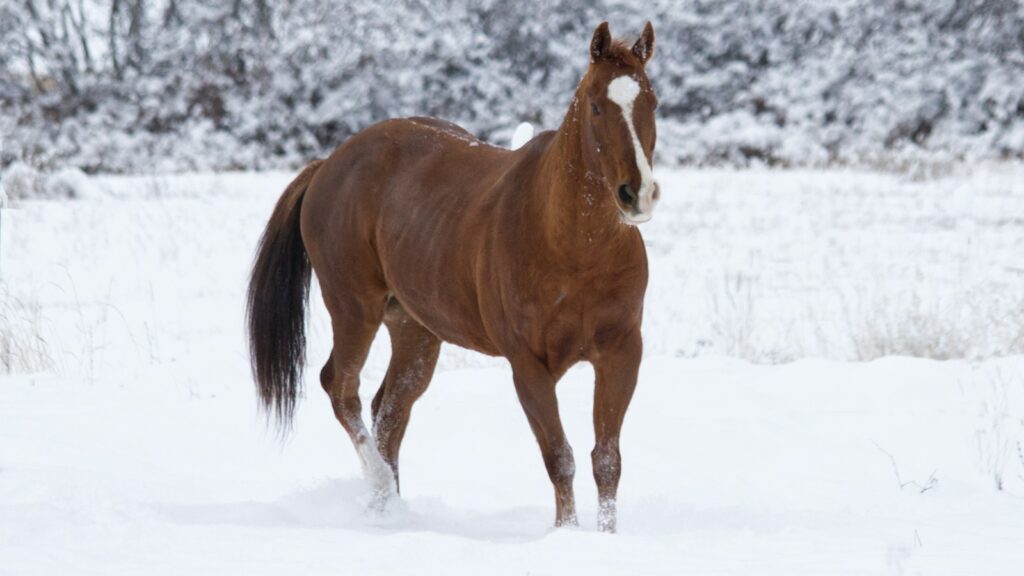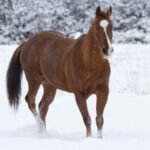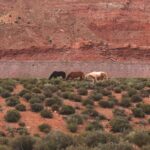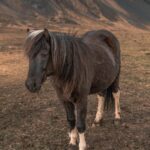In the frosty realms where snowflakes dance and winter winds howl, certain horse breeds have evolved remarkable adaptations that allow them to thrive in frigid conditions. These cold-climate equines combine strength, endurance, and resilience with thick coats and efficient metabolisms that make them uniquely suited for snowy landscapes and icy temperatures. Whether you’re a trail rider seeking a dependable mount for winter adventures, a farmer needing a hardworking partner in cold regions, or simply a horse enthusiast curious about diverse equine adaptations, cold-climate breeds offer fascinating characteristics worth exploring. Let’s journey through seven exceptional cold-weather horse breeds that showcase nature’s ingenious adaptations to harsh environments.
Icelandic Horse: The Viking’s Trusted Companion
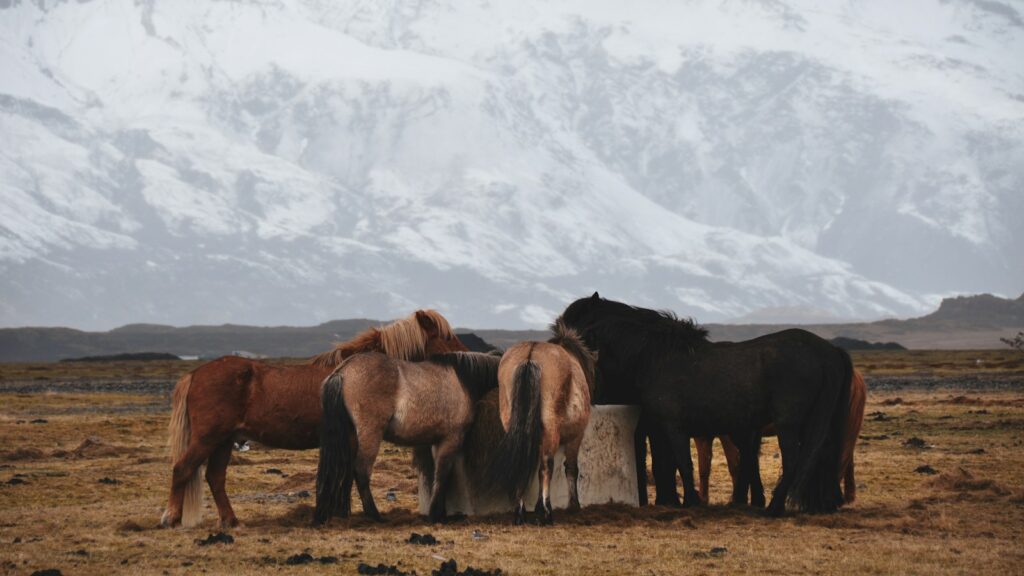
Descended from ponies brought to Iceland by Norse settlers in the 9th and 10th centuries, the Icelandic horse has evolved into one of the world’s most cold-hardy equine breeds. These compact yet powerful horses grow an incredibly thick double coat during winter months, with a dense undercoat and longer guard hairs that effectively repel snow and rain. What truly sets Icelandic horses apart is their unique gait called the tölt—a smooth four-beat lateral gait that allows riders to travel comfortably across Iceland’s rugged landscape without the jarring impact of a trot. Despite their small stature (typically 13-14 hands high), these horses are classified as horses rather than ponies due to their horse-like temperament, structure, and the fact that they can easily carry adult riders across challenging terrain in brutal weather conditions.
Yakutian Horse: Survivor of Siberian Extremes
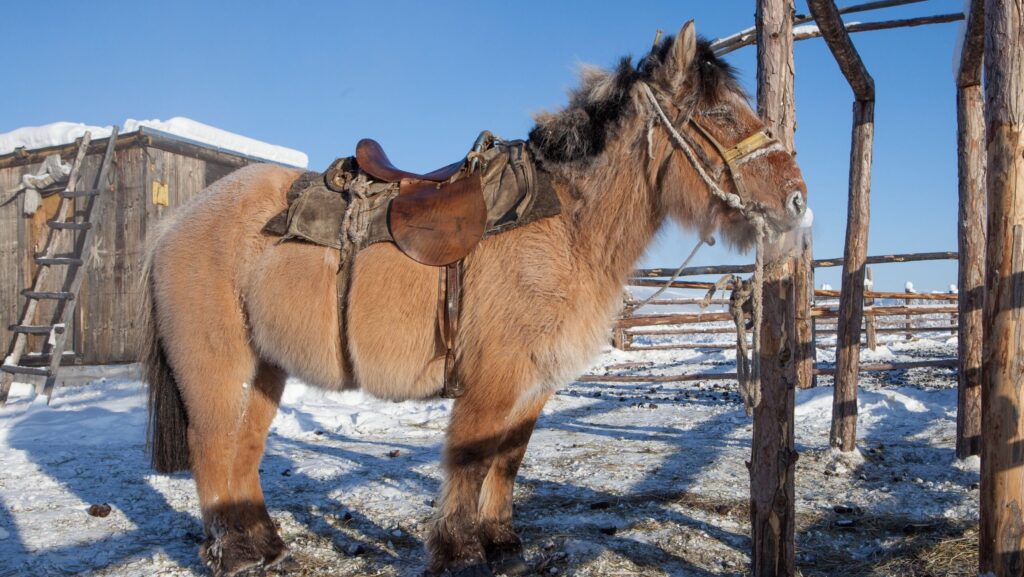
Perhaps no horse demonstrates cold-weather adaptation better than the Yakutian horse, native to the Yakutia region of Siberia where temperatures routinely plummet to -70°F (-57°C). These remarkable horses have evolved short, thick bodies that minimize heat loss and can grow winter coats up to 4 inches thick—among the plushest in the equine world. Their metabolic adaptations are equally impressive, as they can effectively dig through deep snow to find vegetation and can survive on minimal forage during the harshest winter months. Yakutian horses possess a large heart and expanded lung capacity that helps them maintain body heat through efficient circulation in extreme conditions. Researchers have identified specific genetic adaptations in these horses that allow them to regulate body temperature and fat storage more effectively than any other breed, making them true marvels of cold-climate evolution.
Norwegian Fjord: The Versatile Nordic Worker
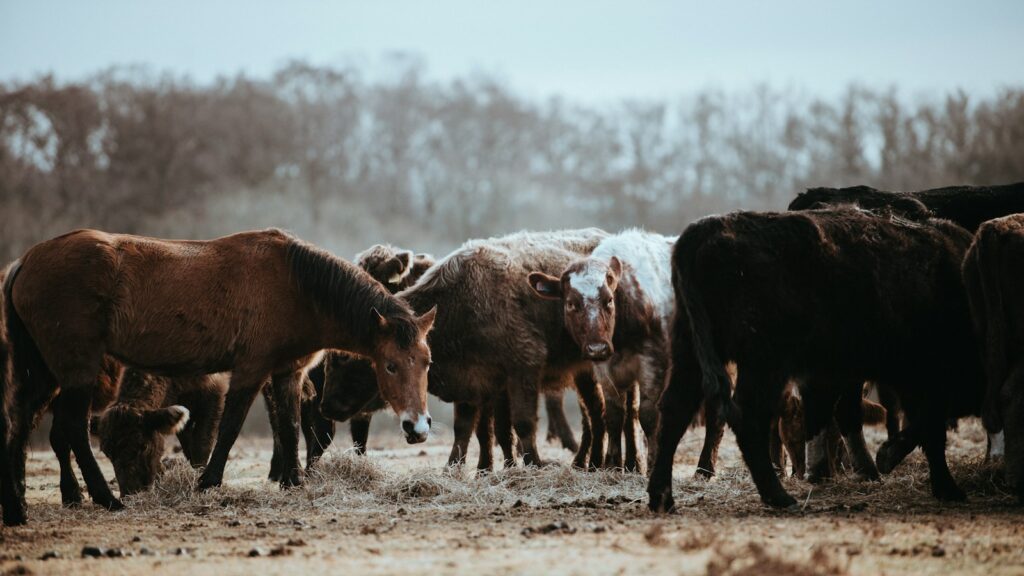
With their distinctive cream-colored coats and striking black “dun” striped manes cut to stand upright in a crescent shape, Norwegian Fjord horses are immediately recognizable. These ancient horses have been selectively bred in the mountainous regions of western Norway for over 4,000 years, resulting in an exceptionally hardy, sure-footed breed that thrives in cold, wet conditions. Their muscular build combines with a relatively short stature (typically 13.2-14.2 hands) to create a powerful, compact horse with excellent stability on slippery terrain. Fjord horses are renowned for their versatility, serving equally well as riding horses, draft animals, and even therapy horses, with a gentle temperament that belies their strength. Their thick winter coat includes coarse outer hairs that effectively channel water away from the skin, allowing them to remain comfortable even in the wet, freezing conditions common to Scandinavian winters.
Bashkir Curly: The Hypoallergenic Cold-Weather Horse
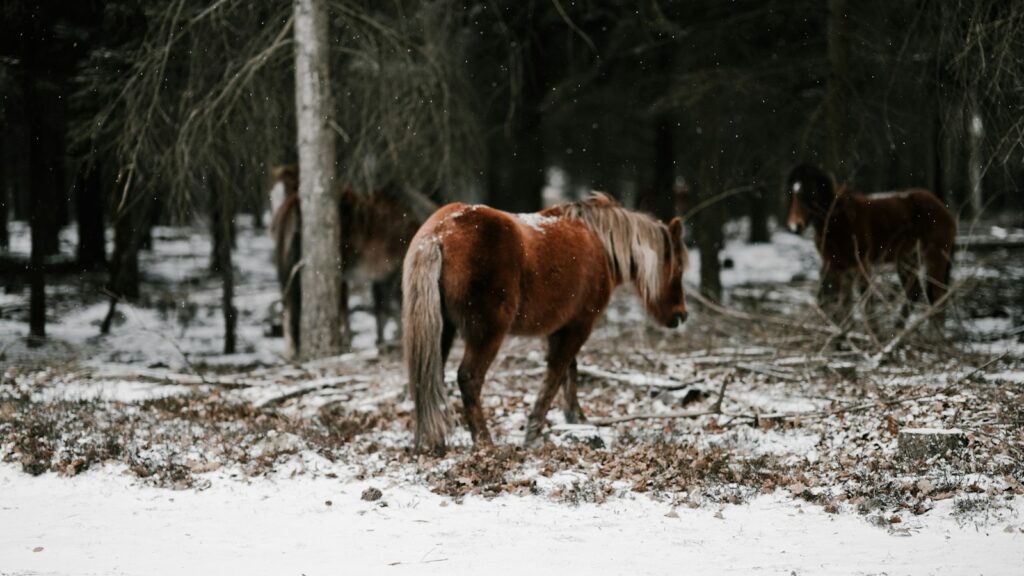
Distinguished by their unique curly coat that ranges from slightly wavy to tight Marcel-like curls, Bashkir Curlies offer a fascinating combination of cold-weather hardiness and hypoallergenic properties. Originally developed in the Bashkortostan region of Russia where severe winters are the norm, these horses grow incredibly dense winter coats that include curly guard hairs that excel at trapping heat close to the body. Their hypoallergenic status—their hair lacks the protein that typically triggers allergic reactions in humans—makes them uniquely accessible to riders who otherwise couldn’t enjoy equestrian activities. Behaviorally, Curlies are known for their level-headed “thinking” approach to new situations rather than reacting with flight instinct, making them excellent partners in challenging winter conditions. Each spring, these horses shed their winter coat completely, sometimes in sheet-like sections, revealing a shorter, sometimes straighter summer coat—a dramatic seasonal transformation that few other breeds exhibit.
Haflinger: The Golden Mountain Horse
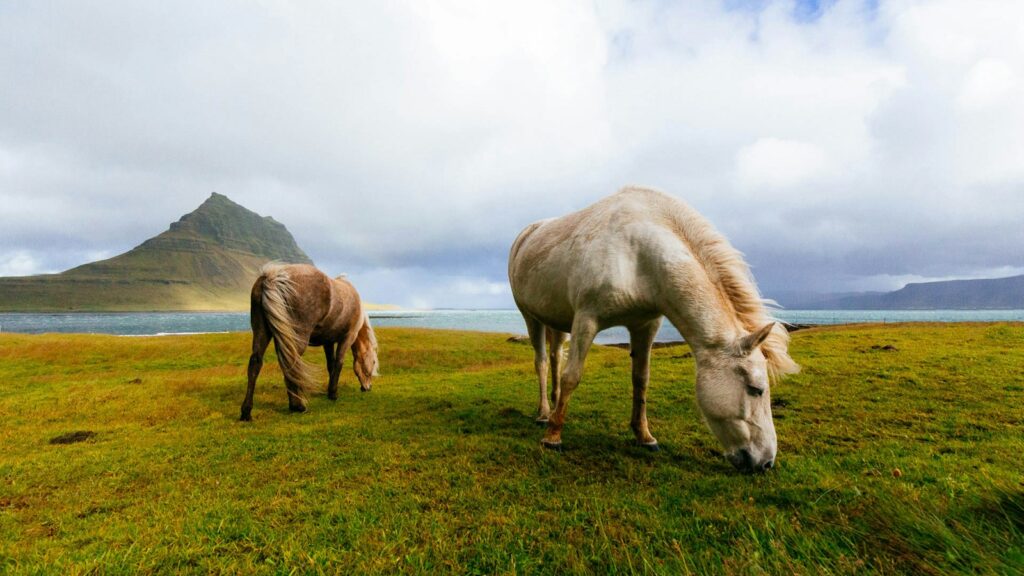
Hailing from the mountainous regions of Austria and northern Italy, Haflingers have developed into exceptional cold-climate horses with their characteristic chestnut coloring and flaxen mane and tail. These horses evolved in Alpine conditions, developing powerful hindquarters and sure-footedness that allow them to navigate steep, snow-covered terrain with remarkable confidence. Standing between 13.2 and 15 hands, Haflingers combine the hardiness of a pony with the strength and riding comfort of a light draft horse, making them versatile mounts for winter trail riding, light draft work, or dressage. Their intelligent, willing temperament pairs with natural cold tolerance, including a thick winter coat and efficient metabolism that allows them to maintain good condition on relatively sparse winter forage. Haflingers’ broad, deep chests house large lungs that efficiently process the thinner air found at higher elevations, making them naturally adapted to mountain environments where oxygen levels are lower and temperatures drop substantially.
Canadian Horse: The Little Iron Horse
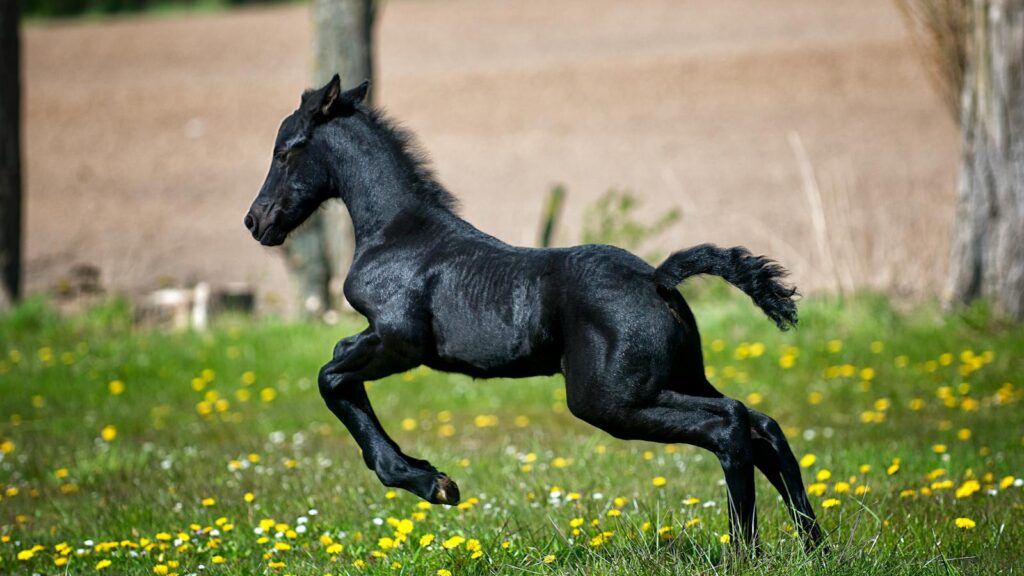
Known as “le petit cheval de fer” (the little iron horse), the Canadian Horse developed remarkable cold-weather adaptations after being introduced to North America by French settlers in the 1600s. Natural selection in the harsh Canadian climate produced a breed with exceptional hardiness, thick winter coats, and the stamina to work long hours in freezing conditions. These horses typically stand 14-16 hands and possess powerful, muscular builds with thick manes and tails that provide additional protection against bitter winter winds. The Canadian Horse’s influence was so significant in early North American history that the breed contributed to the development of numerous American breeds, including the Morgan and the American Saddlebred. Despite nearly facing extinction in the early 20th century, concerted preservation efforts have helped this national treasure of Canada recover, though it remains relatively rare with its population numbering in the low thousands. Their willing work ethic combined with cold-weather adaptations makes them exceptional partners for winter riding or driving through snow-covered landscapes.
Highland Pony: Scotland’s Mountain Survivor
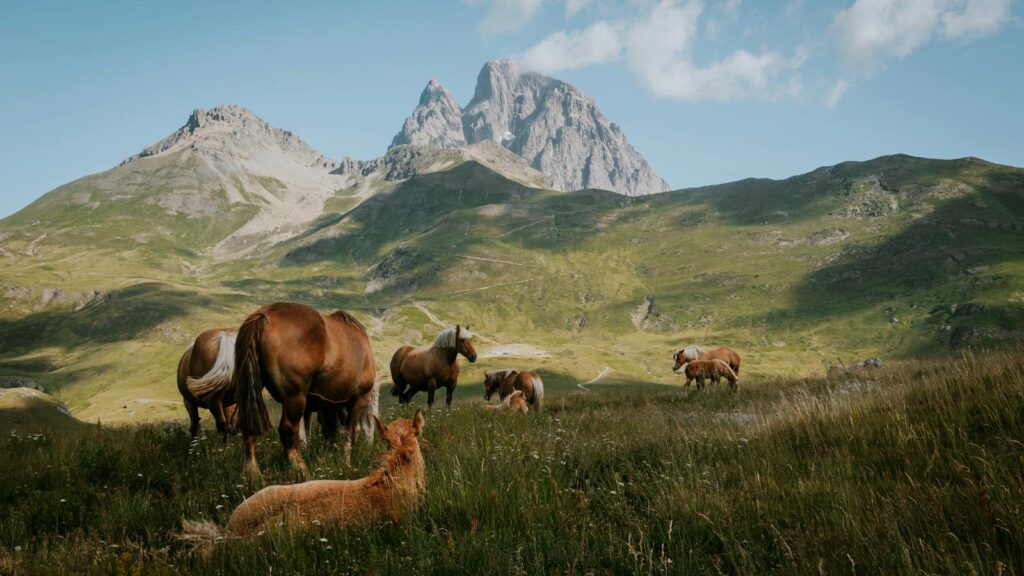
Native to the Scottish Highlands, these sturdy ponies have evolved over centuries to withstand some of the harshest weather conditions in the British Isles, including driving rain, snow, and powerful winds. Highland Ponies develop a double-layered winter coat consisting of an oily outer layer that repels rain and snow, and a dense undercoat that provides exceptional insulation against the cold—they even grow extra hair around their ears for additional protection. Standing between 13 and 14.2 hands, these powerful ponies have traditionally been used for everything from carrying deer carcasses down from highland hunts to pulling timber and plowing fields in conditions where other horses would struggle. Their calm, sensible temperament makes them excellent partners in challenging weather, as they’re less likely to spook or become distressed when conditions deteriorate. Highland Ponies typically come in dun, gray, and brown colorations with primitive markings like dorsal stripes and zebra markings on the legs—features that connect them to ancient equine ancestors and other primitive cold-adapted breeds.
Cold-Climate Adaptations: Understanding the Science

Cold-climate horse breeds share several physiological adaptations that enable their survival in frigid environments. Their winter coats differ dramatically from warm-climate breeds, not just in length but in structure, with specialized secondary hair follicles that produce dense undercoat for insulation. Metabolically, these breeds demonstrate enhanced abilities to convert feed to body heat, with more efficient digestive systems that extract maximum calories from sparse winter forage. Many cold-adapted breeds also deposit fat differently than their warm-climate counterparts, maintaining thicker subcutaneous fat layers that serve as additional insulation rather than concentrating fat around internal organs. Circulation adaptations include specialized capillary arrangements in extremities that minimize heat loss through a countercurrent exchange system similar to that found in arctic mammals. These physiological differences aren’t merely superficial but represent thousands of years of selective pressure that have optimized these animals for survival in environments that would quickly compromise the health of breeds developed in milder climates.
Caring for Cold-Climate Breeds in Warmer Regions
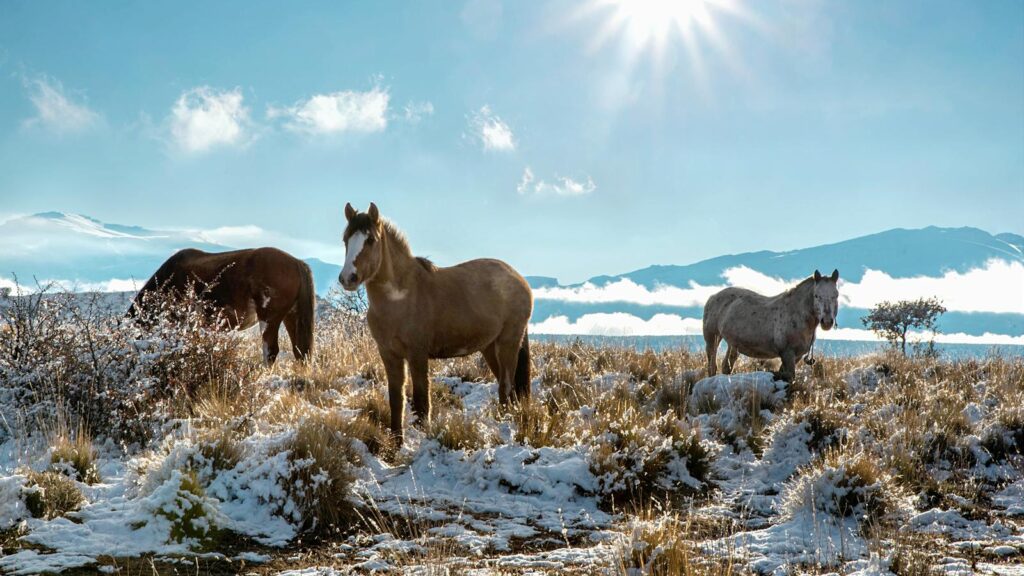
While cold-adapted horse breeds thrive in chilly conditions, they require special consideration when kept in warmer climates. Their efficient metabolism and thick coats that serve them well in winter can predispose them to overheating during hot weather, necessitating management adjustments like access to shade, fans, and sometimes even air-conditioned stalls during extreme heat. Many owners of cold-climate breeds in warmer regions clip their horses’ coats during summer months and adjust exercise schedules to avoid the hottest parts of the day. Nutritionally, these breeds often require fewer calories in warm climates than their warm-blood counterparts of similar size would need, as their metabolic efficiency evolved for environments where conserving energy was crucial to survival. It’s important to monitor these horses carefully for signs of heat stress, including elevated respiratory rates, excessive sweating, or reluctance to move, as their stoic nature (another cold-climate adaptation) may cause them to hide discomfort until conditions become dangerous.
Training Considerations for Cold-Weather Breeds
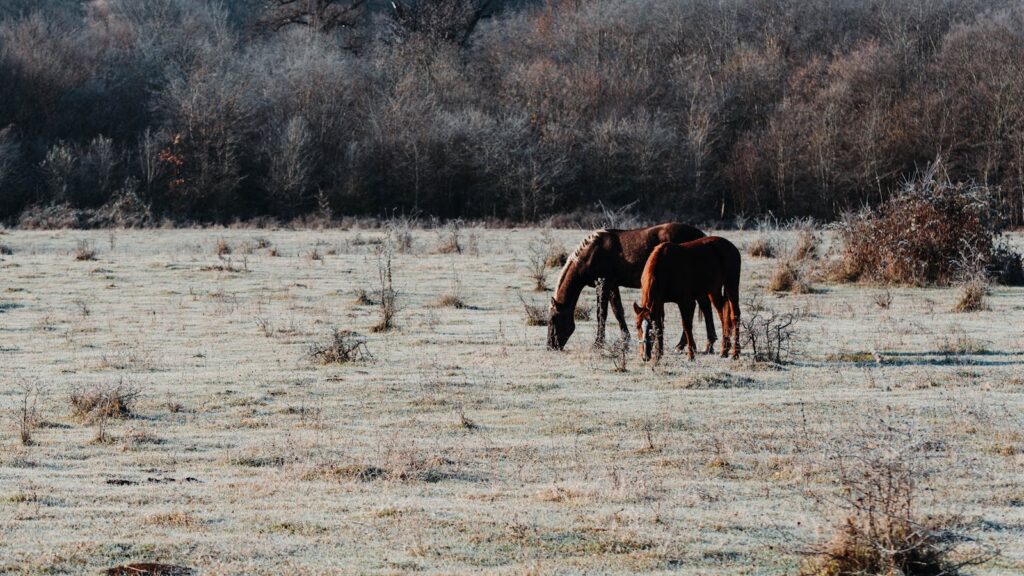
The historical roles and environmental pressures that shaped cold-climate horse breeds have influenced not just their physical characteristics but their learning styles and temperaments as well. Many of these breeds demonstrate exceptional problem-solving abilities developed through generations of having to navigate challenging winter terrain and find food under difficult conditions. Trainers often note that cold-climate breeds respond better to training approaches that engage their intelligence rather than repetitive drilling, as their survival often depended on adaptability rather than speed. Most cold-weather breeds form exceptionally strong bonds with their handlers, possibly reflecting the interdependent relationships necessary for survival in harsh environments where humans and horses relied heavily on each other. When training these breeds, it’s important to recognize their heritage may include making independent decisions in dangerous situations, requiring training that channels rather than suppresses this trait—many successful riders of Icelandics, Fjords, and Highlands note they “suggest” rather than “command” when working with these historically self-sufficient breeds.
Competitive Pursuits for Cold-Climate Horses
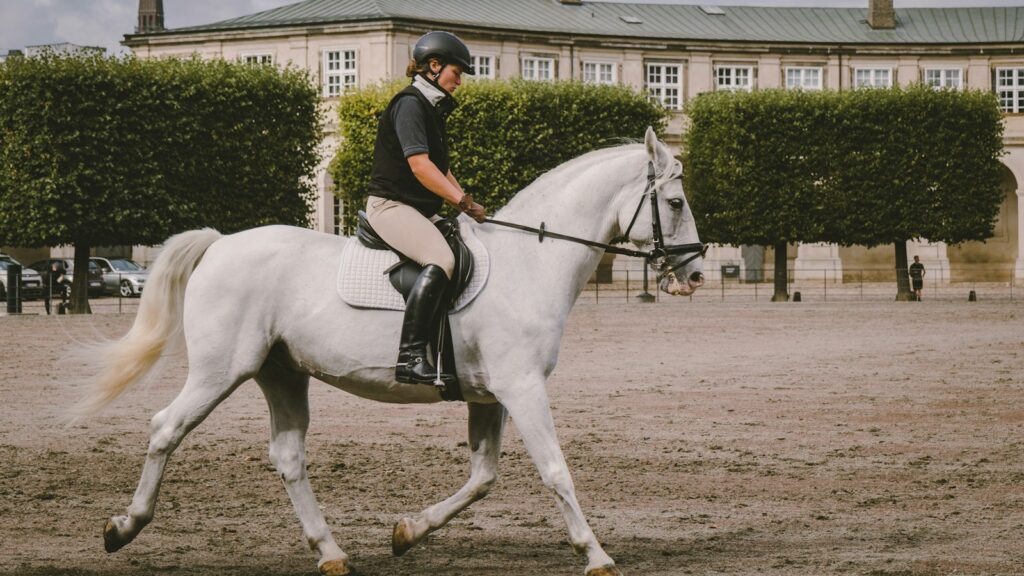
Despite being developed primarily as working animals rather than sport horses, cold-climate breeds excel in various competitive venues that showcase their unique abilities. Icelandic horses compete in specialized five-gait competitions that highlight their unique tölt and flying pace, attracting enthusiasts from around the world to witness these smooth, efficient gaits. Haflingers and Fjord horses have developed strong followings in combined driving events, where their powerful builds, steady temperaments, and natural agility make them formidable competitors despite competing against larger breeds. Highland Ponies and Canadian Horses often excel in extreme trail competitions and competitive trail riding events where their sure-footedness, stamina, and level-headed approach to obstacles give them advantages over more reactive breeds. For riders interested in historical riding traditions, many cold-climate breeds participate in working equitation and traditional riding demonstrations that connect modern equestrians with centuries-old horsemanship practices adapted for harsh environments. Their versatility often surprises riders accustomed to more specialized modern sport horses, as most cold-climate breeds can transition successfully between multiple disciplines.
Conservation Status and Preservation Efforts
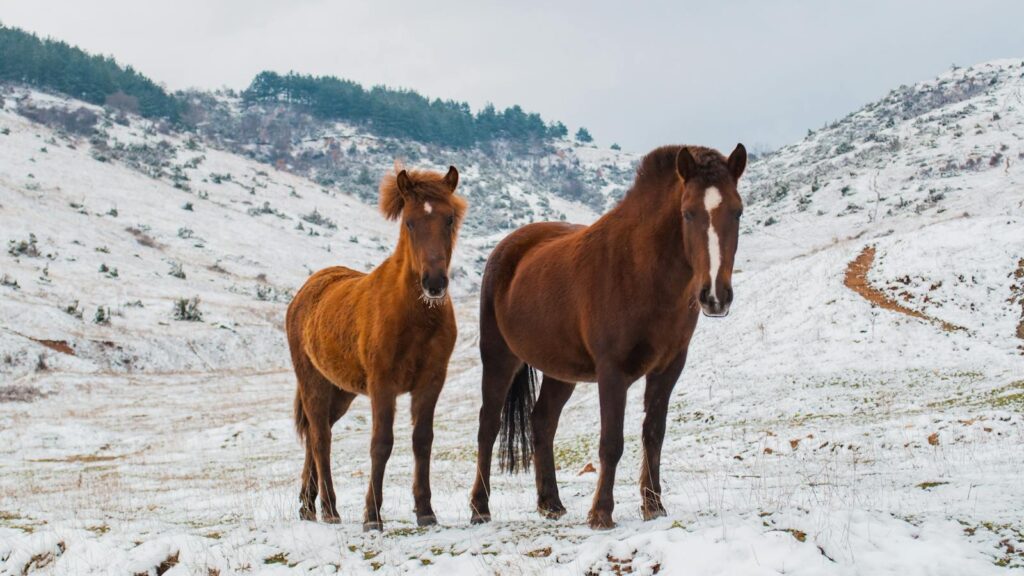
Several cold-climate horse breeds face uncertain futures despite their remarkable adaptations and historical significance. The Yakutian horse, perfectly adapted to extreme Siberian conditions, has seen its population decline as mechanization reduces demand for working horses in their native region, with fewer than 2,000 purebred animals remaining. Similarly, the Canadian Horse nearly disappeared in the early 20th century and remains on the conservation watch list of the Rare Breeds Canada organization, requiring ongoing preservation efforts. Many conservation programs now focus on highlighting the unique genetic value these breeds represent, as they contain cold-adaptation genes that might prove valuable in addressing climate change challenges. Breed-specific conservation organizations work to maintain genetic diversity within these small populations while promoting their practical uses in modern contexts. The genetic bank maintained by the Food and Agriculture Organization of the United Nations now includes material from several rare cold-adapted breeds as part of global efforts to preserve agricultural genetic diversity for future generations.
Choosing the Right Cold-Climate Breed for Your Needs
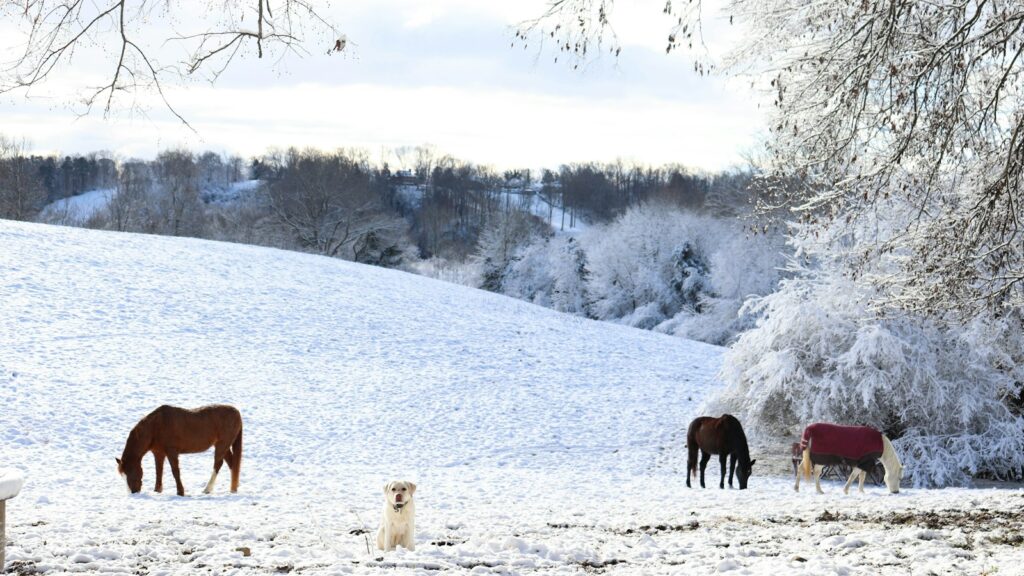
When selecting among cold-climate horse breeds, consider both your environment and your intended activities to find the best match. For riders primarily interested in comfortable trail riding in variable terrain, the smooth-gaited Icelandic horse offers unparalleled comfort and sure-footedness, though their smaller size might not suit very tall or heavy riders. Those interested in draft activities like light farming, logging, or carriage driving might find the Norwegian Fjord or Canadian Horse ideal, combining cold hardiness with sufficient strength for moderate pulling tasks. The Haflinger offers an excellent middle ground for riders wanting versatility between riding and light draft work, with a size comfortable for most adults and an agreeable temperament suitable for families. For those in extremely cold regions with minimal shelter options, the Yakutian horse’s unparalleled cold tolerance makes it unique, though their rarity makes acquisition challenging outside their native regions. Beyond physical considerations, each breed carries unique cultural heritage and traditional uses that might align with particular interests, whether that’s historical riding styles, traditional farming methods, or cultural competitions.
conclusion
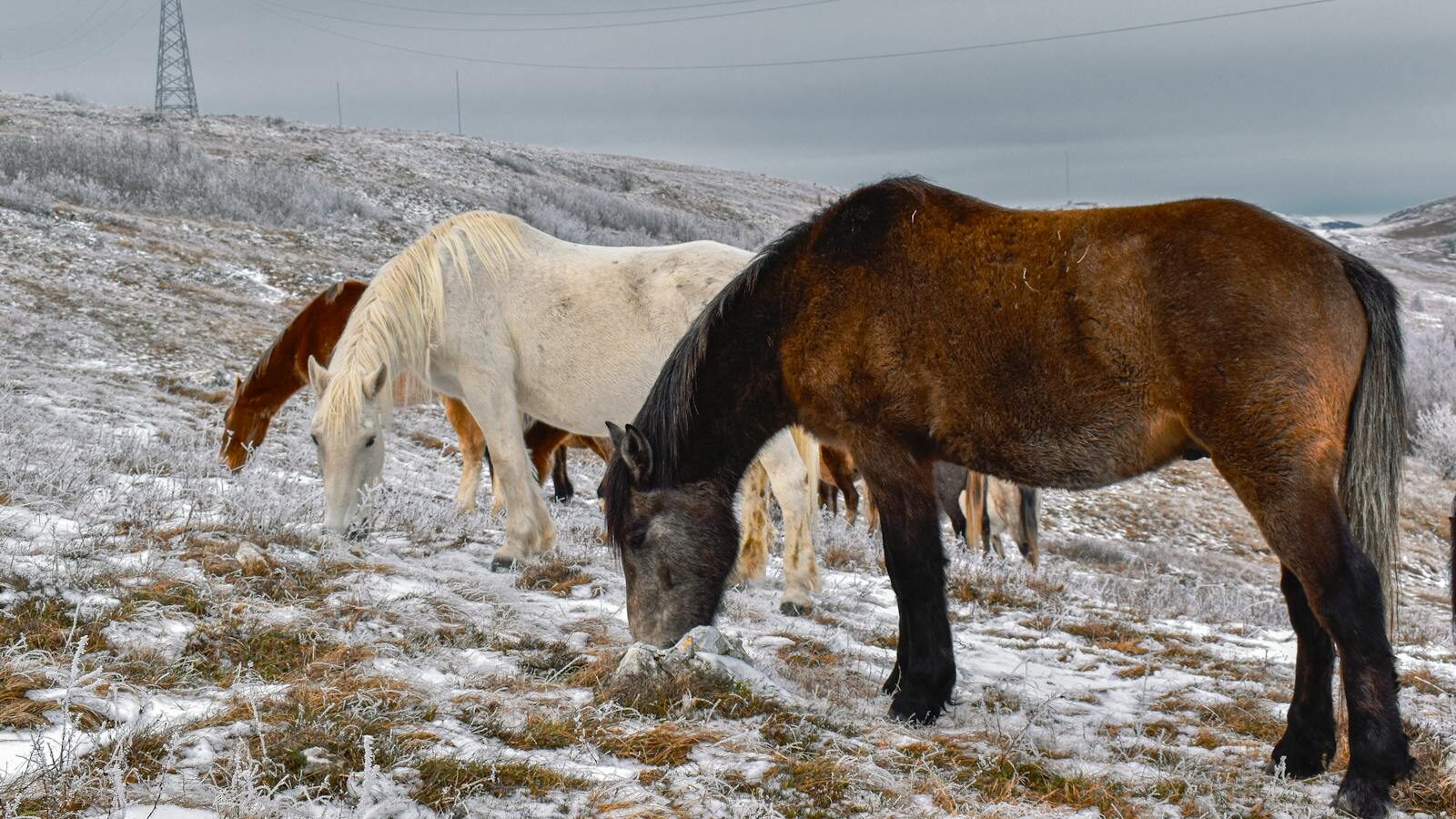
Cold-climate horse breeds represent extraordinary examples of natural and selective adaptation, developing characteristics that allow them to not just survive but thrive in environments that challenge human endurance. From the smooth-gaited Icelandic to the curly-coated Bashkir, each breed offers unique capabilities shaped by centuries of adaptation to specific harsh environments. These breeds often combine physical hardiness with level-headed temperaments and problem-solving abilities that make them exceptional partners for riders in challenging conditions. As climate patterns shift and interest grows in sustainable, resilient livestock, these ancient breeds offer valuable genetic resources and practical capabilities that deserve appreciation and conservation. Whether navigating snowy trails, pulling sleighs across frozen landscapes, or simply demonstrating the remarkable diversity of equine adaptation, cold-climate horses connect modern equestrians with centuries of partnership between humans and horses in some of Earth’s most challenging environments.

